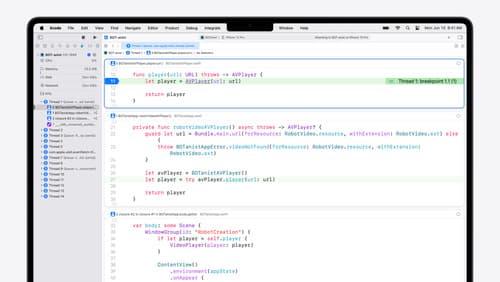what's the difference between folders and groups on Xcode 16?
Asked on 2025-05-09
1 search
In Xcode 16, the difference between folders and groups is primarily about how they are represented and used within the Xcode project navigator.
-
Folders: These are actual directories on the file system. When you create a folder in Xcode, it corresponds to a real folder in your project's directory structure. This means that any files you add to a folder in Xcode will also appear in that folder on your disk.
-
Groups: These are virtual collections of files within Xcode. They do not correspond to actual directories on the file system. Instead, they are used to organize files within the Xcode project navigator for better readability and management. Files in a group can be located anywhere on the disk, and moving a file between groups in Xcode does not affect its location on the file system.
This distinction allows developers to organize their project files in a way that makes sense for their workflow without being constrained by the physical file system structure.

What’s new in Xcode 16
Discover the latest productivity and performance improvements in Xcode 16. Learn about enhancements to code completion, diagnostics, and Xcode Previews. Find out more about updates in builds and explore improvements in debugging and Instruments.

What’s new in privacy
At Apple, we believe privacy is a fundamental human right. Learn about new and improved permission flows and other features that manage data in a privacy-preserving way, so that you can focus on creating great app experiences.

Elevate your tab and sidebar experience in iPadOS
iPadOS 18 introduces a new navigation system that gives people the flexibility to choose between using a tab bar or sidebar. The newly redesigned tab bar provides more space for content and other functionality. Learn how to use SwiftUI and UIKit to enable customization features – like adding, removing and reordering tabs – to enable a more personal touch in your app.
